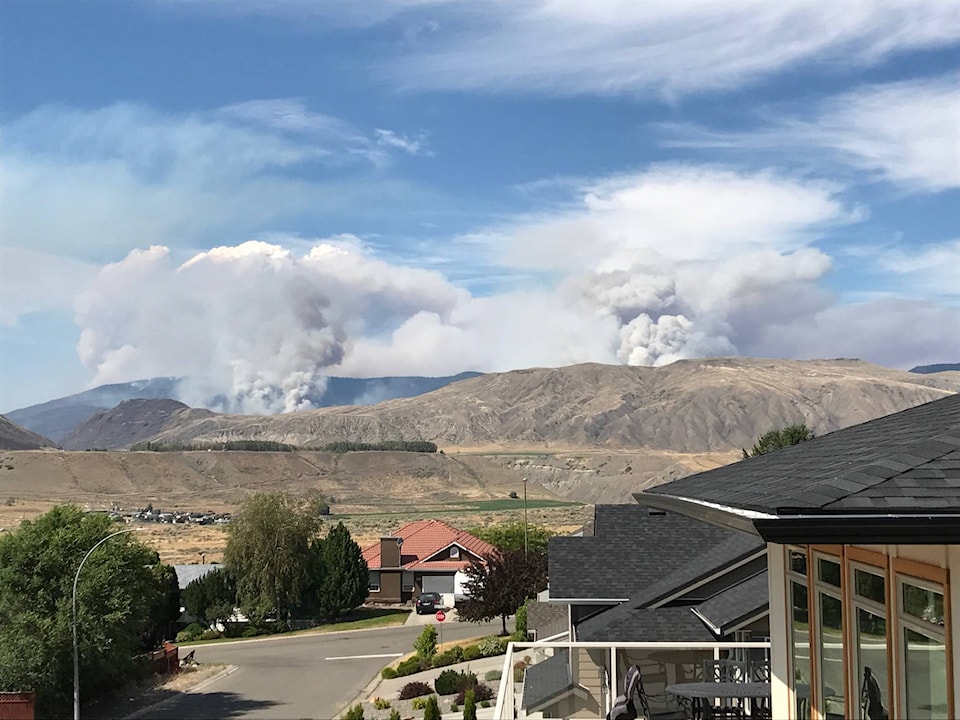On Friday, July 14 the Thompson-Nicola Regional District (TNRD) issued an evacuation order for 376 residences in the region of Loon Lake. The area had been under evacuation alert since July 8. At the same time, an evacuation alert was issued for the Village of Clinton.
A cold front coming into the region on July 15 will bring high winds. Kevin Skrepnek, chief information officer for the BC Wildfire Service, says that the next 24 hours are critical.
Ground crews and heavy equipment continue to build and enforce guard lines around the fire, with support from helicopters. Air tankers and helicopters will continue to be used as necessary. Controlled burning operations have been occurring and will continue over the next several days, as conditions allow. These controlled burning operations will help to reduce fuel between the fire and the guard lines.
The Ashcroft Reserve fire, which started on July 6, now covers 14,715 hectares and is zero per cent contained.
Loon Lake residents have been asked to report to the Emergency Social Services reception centre at Thompson Rivers University (Old Main Building, 900 McGill Road, Kamloops; phone 1-250-377-7188). Evacuees should also register with the Canadian Red Cross at 1-800-863-6582, or online at www.redcross.ca.
The TNRD has opened a resiliency centre in Kamloops at the City of Kamloops’ Soccer Central Lounge and Meeting Room at 1550 Island Parkway on McArthur Island. The centre is scheduled to be open seven days a week from 10 a.m. to 4 p.m., but check the centre’s hours on the TNRD’s website (www.tnrd.ca) before visiting.
The resiliency centre will provide resources for evacuees, including insurance advice from the Insurance Bureau of Canada and insurers. The centre will also house a variety of non-governmental agencies (NGOs) that will be able to provide services for evacuees. Service Canada will also be located at the centre.
Highway 1 remains closed from 10km south of Cache Creek to five kilometres east, and Cornwall Road remains closed. Ashcroft residents wanting to go to and from the coast can use Highway 97C from Ashcroft to the junction with Highway 1.
Highway 97 is closed from Cache Creek to Clinton. Highway 99 is open to local traffic only from Lillooet to the junction with Highway 97, but there is no access to Hwy. 97. For highway information, go to www.drivebc.com.
An emergency operation centre for evacuated members of the Ashcroft Indian Band has been set up on Railway Avenue (beside Fields) and is open 9 a.m. to 4 p.m., seven days a week. It offers various services for evacuees, and will help direct them to agencies that can assist.
A supply post has also been set up at the River Inn for all evacuees from the area. Clothing, shoes, water, pet food, and other items are available free of charge, and London Drugs has donated bags of toiletries.
The Ashcroft Hospital remains closed until further notice, but the Medical Clinic has reopened (regular hours, Monday to Friday). The evacuated residents of Jackson House and Thompson View Lodge and Manor remain evacuated. Interior Health has set up a phone line for families wanting to get in touch with loved ones; call 1-877-442-2001.
For more information about local services and assistance, visit the Village of Ashcroft website at www.ashcroftbc.ca and look under “News and Notices” on the main page.
